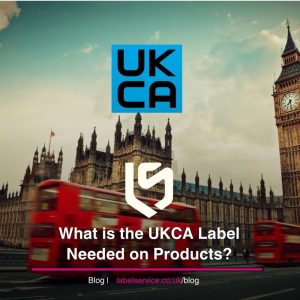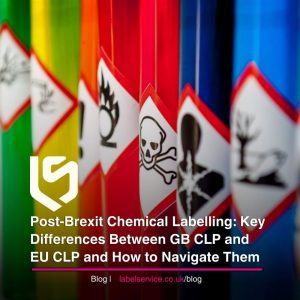Contemplating changing up your labels? You might want to add the recycling ‘swoosh’ instead of waiting until 2026. The labelling requirements for extended producer responsibility (EPR) for packaging will be introduced as part of a UK-wide statutory instrument later in 2023. The department for environment, food and rural affairs (Defra) set out the plans during its second business readiness forum. The forums are intended to allow industry to discuss Defra’s collection and packaging reforms and delivery projects.
Brand owners and importers will be obligated to label their primary and shipment packaging made from most materials either ‘recycle’ or ‘do not recycle’ with an accompanying logo by 31 March 2026. Defra will allow a further year for the labelling of plastic films and flexibles to align with the requirement for local authorities to have recycling collections in place for these materials.
Linda Crichton, Defra’s team leader for producer responsibility, told the forum: “By far the majority of the feedback was that stakeholders wanted a single, UK-wide approach.”
Resources charity WRAP has agreed that the Recycle Now ‘swoosh’ can be used free of charge as the logo. There will be no de minimis size for the businesses covered, Defra says, but distributors of unfilled, plain packaging will be required to provide small businesses with information on the recyclability of the material they supply. Defra adds that there will be “some flexibility” in how small businesses provide recycling information to the users of the packaging.
Statutory instruments are a form of legislation which allows the government to bring acts of parliament into force. By far the majority of the feedback was that stakeholders wanted a single, UK-wide approach. The EPR statutory instrument will set out key requirements, including the requirement to assess packaging to determine its recyclability, minimum size requirements and the terminology which must accompany the logo.
Defra will include further recommendations such as the use of colour, the labelling of multi-material packaging and additional information on where to recycle packaging, for example through take-back schemes, in guidance it will publish “later this year”. Defra set out its initial proposal for labelling in the consultation on EPR in 2019, 90% of those who responded to which said they supported proposals for a binary labelling system.
Defra sought further views on its approach to recyclable labelling in its consultation in 2021. The government set out its intention to proceed with the requirement for mandatory labelling of packaging to indicate recyclability in a consultation response published in March 2022.
During the forum, Defra addressed the recent publication of the government’s response to its consultation on the deposit return scheme (DRS) in England, Wales and Northern Ireland, which also included discussion of labelling. Defra says it recognises that labelling of drinks containers is “important” to ensure the DRS operates effectively and to improve consumer engagement. The consultation showed “overwhelming support” (95%) for the introduction of some form of mandatory labelling through a DRS logo or something similar, Defra says.
England, Wales and Northern Ireland all intend to mandate the use of a mark to identify a product as being part of a DRS and an identification marker such as a barcode or a QR code to enable the container to be recognised at the return point. A yet to be appointed deposit management organisation (DMO) will determine the specific details and design, Defra says, including any crossover with the recyclability label.
OPRL welcomes government plans on recycling labels
On-Packaging Recycling Label (OPRL) has said that Defra’s plan for labelling under Extended Producer Responsibility (EPR) is reassuring. The government plans to adopt the recycling ‘swoosh’ and from 2026, brand owners and importers will be required to label the majority of packaging products with a label instructing consumers to ‘Recycle’ or ‘Do Not Recycle’, and an accompanying logo.
OPRL executive director Margaret Bates said: “Consumers need clear messages, and this commitment to familiar imagery and messaging will help to avoid any confusion. It is also encouraging to see that Defra, the devolved administrations and OPRL members – including many international brands – understand the value of the label.”
On the government’s decision to offer the logo free of charge, Bates added: “Our ongoing engagement with Defra means this outcome was not surprising. Instead, OPRL is focused on helping our members to prepare, by assessing the recyclability of their packaging, and navigating the intricacies of labelling.
“You could compare it to filling out a tax return – it is possible to do it yourself, but if you are looking for a guarantee that you have ticked every box, then it is safer to hire an accountant. Managing labelling requirements for a vast range of products is challenging; getting it wrong can have a huge impact on consumer relations, as well as the regulatory consequences.”
OPRL said its label scheme is used by more than 750 companies and charities. The ‘recycle’ label will be used where 75% or more of UK local authorities collect the packaging concerned through household recycling collections. ‘Do not recycle’ will appear when fewer than 50% of UK local authorities collect a type of packaging through household recycling collections, or the material involved is not effectively sorted, processed or sold as recyclate.
Meanwhile, financial think-tank Planet Tracker has urged consumer brands to ensure the material of their labels matches the materials of containers. It said this could establish a closed-loop recycling system. Thalia Bofiliou, senior investment analyst at Planet Tracker, said: “To improve the current supply of recycling products, industry needs to find solutions to reach these public commitments. “If these consumer companies added a sleeve label ideally of the same material as the bottle, this would increase the supply of recycled material and therefore reduce the cost differential to the fossil fuel-based feedstock.”
Will it help?
How confident are you that you always put the right rubbish in the right bin? Getting it wrong means that waste that could potentially be recycled isn’t, or that recycling gets contaminated with non-recyclable waste. When this happens, whole lorries full of recycling can end up being sent to landfill.
According to data from local authorities, much more needs to be done to help households sort their waste correctly. Even in Devon, which has one of the highest rates of recycling in the country, just over 40% of the contents of general waste bins picked up in kerbside collections could have been recycled, research by Devon County Council has shown. And on the flip-side, four in five households in the UK add at least one type of item to their recycling bin that isn’t actually accepted in local collections, figures from waste and resources organisation WRAP show.
You are probably familiar with the ‘Widely recycled’, ‘Check local recycling’ and ‘Not currently recycling’ logos on product packaging. But these are being replaced with two simpler logos: ‘Recycle’ or ‘Don’t Recycle’ (for packaging that’s not collected by at least half of UK local authorities). Expect to see these on products from now on, and more widely by the end of the year. The government is also considering plans to standardise what local authorities do take in collections to make it easier for all of us to sort our recycling properly.
While the new logos may make it easier to tell whether or not something should go in the recycling bin, the meaning of other eco-claims on packaging remains less clear cut. While seeing terms such as ‘biodegradable’ or ‘recyclable’ on product packaging can seem reassuring, these and other commonly made green claims might not actually mean what you think they do.
Anything that claims to be biodegradable – a plastic bag or plastic packaging, for example – should break down completely into natural materials such as water and carbon dioxide when bacteria and other microbes get to work on it. However, how long something takes to biodegrade can vary enormously and there’s currently no timeframe for this set by the UK government. Scientists have even found that some so-called biodegradable plastic bags were still strong enough to carry shopping three years after they were thrown away. As a result, waste charity WRAP warns that the use of the term ‘biodegradable’ is too vague to have any real meaning.
If something is compostable, you can chuck it on the compost heap, right? Not necessarily. For a product to claim it is compostable, it has to break down into natural materials within a certain timeframe – usually around 90 days. However, it might only do so in an industrial composter and not in the compost bin at the bottom of the garden. Check that anything that claims to be compostable is ‘certified home compostable’ –if it is, you may see a logo on the packaging with three arrows pointing down towards a daisy. If you see this, it will break down in your home compost bin.
You’d be forgiven for thinking that if something is recyclable, it would be accepted in your kerbside recycling collection or at your local recycling centre. Think again. ‘Technically, everything is recyclable, so this term doesn’t indicate that an item can actually be recycled in practice – this will depend on whether there’s a collection system for a particular material in your area,’ advises Paula Chin from conservation organisation WWF. Look for the new Recycle and Don’t Recycle logos and check with your local council what it collects or accepts at recycling centres. Alternatively, use the Recycle Now postcode checker (recyclenow.com) to find out.
The UK Government’s Resources and Waste Strategy sets out how the country will preserve material resources by minimising waste, promoting resource efficiency and moving towards a circular economy in England. The spotlight on household waste is inevitable since food and other packaging make up a significant proportion of what ends up in domestic refuse.

















